One of the key decisions you’ll have to make when shooting video footage is which memory card is best for your needs. In this buyer’s guide we’ll list what we believe are the best memory cards for video, with options for CFexpress, CFast, XQD, SD and microSD card users. Even if these options aren’t quite right for you, by the end of this guide you’ll learn how to choose and use memory when movie-making.
Choosing the best memory card for video
With a mind-boggling variety of technical terminology such as read speeds, write speeds, UHS Speed Classes, XQD, SD, CF, V Class and many more the world of choosing and using memory cards to capture video footage can easily appear to be confusing. To help guide you through the factors involved, we explain what you need to know when choosing the best memory cards for video shooting.
With many of today’s cameras – whether they be mirrorless, DSLRs or professional digital cinema cameras – now offering video shooting at 4K resolutions and upwards the choice of which memory cards to use is crucial. Unsurprisingly, shooting video eats up much more memory than shooting stills… so which cards you choose to use is key.
To give you some guidance in this guide we’ll examine the pros and cons of different types of memory cards, what you should consider when buying memory cards for video projects and our recommended best buys.
Which memory cards can I use for video?
Historically, the two most common memory card formats have been Secure Digital (SD) and CompactFlash (CF) cards. SD cards are used in all types of cameras – from point-and-shoot models to pro digital cinema cameras – with the smaller microSD cards now often utilised in cameras such as HD camcorders and aerial cameras. CF cards are more robust and durable and are often used in high-spec DSLRs and digital cinema cameras.
Many cameras that record digital video offer dual memory card slots. For example, Panasonic’s GH5S camera features two SD card slots but some cameras offer a mixture of card formats (maybe CF and SD) in their dual slots. The key benefit of dual card slots is that once one card is full of data you can continue to record on the other one. To ensure this happens smoothly learn exactly how the dual card slots in your camera work.
Understanding read vs write speeds
Memory cards have both read speeds and write speeds. Write speeds describe how quickly images or video can be saved to a card. Read speeds denote how fast data can be retrieved from a card; for example, when transferring your video footage to an external hard drive. Generally read speed is always faster than write speed, but write speed is absolutely essential for video as you’ll need your cards to have both the speed and the capacity to deal with recording large amounts of digital video data.
Card speed is shown by either a multiplication value – each ‘x’ value represents 0.15MB/sec, so 2000x multiplied by 0.15MB/sec denotes 300MB/sec – or a ‘Class’ rating. Class ratings denote the minimum write performance to record video – a Class 2 card can handle sustained writing of data at 2MB/sec, a Class 4 card will handle 4MB/sec, Class 6 at 6MB/sec and Class 10 is the fastest at 10MB/sec. You’ll need at least a Class 4 card to record Full HD 1080p video, but it’s probably best to go for Class 10.
There is also a V Class rating, which was created by the SD Association. The highest V rating is V90, which denotes a minimum sustained speed of 90MB/sec. The other V Class ratings are V60, V30, V10 and V6, in which the numbers denote the MB/sec speed.
For memory cards it’s better to work off what’s known as the ‘sustainable speed’, rather than the ‘achievable speed’. As a rule of thumb if you’re shooting 4K RAW you’ll need write speeds of at least 75MB/sec for it to keep up without dropping frames.
UHS Speed Classes indicate how quickly video content can be transferred to a memory card. UHS-I enables maximum transfer speeds of 104MB/sec, while UHS-II enables speeds of up to 312MB/sec. Within the UHS Speed Class there are two designations, U1 and U3, which represent minimum write speeds of 10MB/sec and 30MB/sec respectively. For video it’s usually best to choose a U3 designated card as this will cope with 4K video.
CFast 2.0 cards were once the leaders in terms of speed. The original CFast 2.0 card, in 2013, promised read speeds of 450MB/sec and write speeds of up to 350MB/sec. CFast and XQD cards were created by the CompactFlash Association (CFA) to replace the CF card format as it had reached its maximum performance capabilities.
In their current versions CFast cards have a theoretical limit of 600MB/sec and XQD cards 1000MB/sec. They are ideal for shooting 4K video resolutions and beyond. XQD cards are not compatible with as many cameras as some other card types but they do work with Nikon DSLRs and mirrorless cameras, the Sony FS7 and Panasonic’s LUMIX S1 and S1R full-frame cameras.
Every memory card has its capacity shown on it – for example, from 4GB up to 512GB. The capacity values always double, so cards will have capacities of 4GB, 8GB, 16GB, 32GB, 64GB and so on. Naturally enough, the larger the value the more capacity a card has to store your video footage.
Memory card formats & slots explained
Whilst there have been many variants of card types and formats the two most common card formats have been Secure Digital (SD) and CompactFlash (CF) cards. SD cards are used in all types of cameras – from point-and-shoots to professional digital cinema cameras – with the smaller microSD cards now often utilised in cameras such as HD camcorders and aerial cameras. CF cards are more robust and durable and are often used in pro-spec DSLRs and digital cinema cameras.
Many cameras that record digital video offer dual memory card slots. For example, the Canon EOS 5D Mark IV DSLR includes one SD card slot and one CF card slot, whilst the Panasonic GH5S camera features two SD card slots.
The benefits of dual card slots are that once one card is full of data you can continue to record on the other one and, of course, you will be safe in the knowledge that you have not missed any shots. Do, however, get to know exactly how your dual card slots work in tandem so you can set up your camera to maximise how they work together.
CFast, XQD & CFexpress: what’s the difference?
As you’ve no doubt gathered, speed is of the essence for shooting video and CFast 2.0 cards were once the leaders in terms of speed. The original CFast 2.0 card, launched in 2013, promised read speeds of 450MB/sec and write speeds of up to 350MB/sec.
CFast and XQD cards were created by the CompactFlash Association (CFA) to replace the CF card format as it had reached its maximum performance capabilities. In their current versions CFast cards have a theoretical limit of 600MB/sec and XQD cards 1000MB/sec. They are ideal for shooting 4K video resolutions and beyond.
The next generation of high speed, removable storage is CFexpress, which merges the CFast 2.0 and XQD 2.0 standards. The only drawback for CFexpress cards is that, as yet, they are not compatible with many cameras, but we are already starting to see this change. Nikon’s Z6, Z6 II, Z7 and Z7 II, for instance, now use CFexpress cards thanks to firmware updates. The Canon EOS R5 does, as well. Read our guide to find out which cameras use CFexpress cards.
Understanding memory card read/write speeds & Class ratings
The speed of a memory card pertains to both its read speed and its write speed. Write speeds describe how quickly images or video can be saved to a card. The read speed denotes how fast data can be retrieved from a card – for example, when transferring your video footage to a computer or hard drive.
Generally read speed is always faster than write speed but write speed is absolutely essential for video as you will need your cards to have both the speed and the capacity to deal with recording large amounts of digital video data.
The speed of a card is shown with either a multiplication value – each ‘x’ value represents .15MB/sec, so 2000x multiplied by 0.15MB/sec denotes 300MB/sec – or the more recent ‘Class’ rating.
The speed Class rating was based on requests from movie and video companies, as video recording in different formats and resolutions requires certain write speeds when recording to a card.
The Class ratings denote the minimum write performance to record video – a Class 2 card can handle sustained writing of data at 2MB/sec, a Class 4 card will handle 4MB/sec, Class 6 at 6MB/sec and Class 10 is the fastest at 10MB/sec. As a general rule of thumb you’ll need at least a Class 4 card to record Full HD video but it’s probably best to go for Class 10 for most uses.
To cater for the large amounts of data required for shooting 4K, 360 degrees and 8K video there is now a V Class rating, which was created by the SD Association. The highest V rating is V90, which denotes a minimum sustained speed of 90MB/sec. The other V Class ratings are V60, V30, V10 and V6, in which the numbers denote the MB/sec speed.
On test benches cards can achieve faster speeds but it’s better to work off the ‘sustainable speed’ rather than the ‘achievable speed’. It’s a bit like cars that claim 60mpg performance under test conditions when the reality is probably closer to 40mpg. As a rule of thumb if you’re shooting 4K RAW you’ll need write speeds of at least 75MB/sec for it to keep up without dropping frames.
UHS Speed Classes explained
The so-called UHS Speed Classes indicate how quickly video content can be transferred to a memory card. UHS-I enables maximum transfer speeds of 104MB/sec, while UHS-II enables speeds of up to 312MB/sec.
Within the UHS Speed Class there are two designations, U1 and U3, which represent minimum write speeds of 10MB/sec and 30MB/sec respectively. For video shoots it’s usually best to choose a U3 designated card as this will cope with 4K video.

Card capacity
The choice of memory cards can be baffling. For example, within the SD card variants the so-called SDXC (Secure Digital ‘Xtra Capacity’) cards have much higher capacities and processing speeds than the original SD cards, but you have to make sure your card choice works with your camera.
Every memory card will have its capacity shown on it – for example, from 4GB up to 512GB. The capacity values always double, so cards will have capacities of 4GB, 8GB, 16GB, 32GB, 64GB and so on. Naturally enough, the larger the value the more capacity a card has to store images and/or video.
Tips for buying the best memory card for your video needs
Memory card choices can be baffling but you must be aware of the fastest card speed that your camera supports. Check the instruction manual or manufacturer’s website to ensure that your preferred card matches what the camera is capable of handling.
Ask yourself how long you plan to shoot for and how many cards you’ll need to do so? You can quickly make calculations based on the amount of time you plan to shoot for and the resolution you’ll be shooting at. Make sure you have enough storage capacity to cover your shoot and always bring at least one extra card over above your estimated required capacity.
In general, it’s safer to stick to high-capacity cards from brands such as Lexar, Kingston, SanDisk, Sony and Transcend. They are usually faster, more reliable, more robust and will provide more back-up measures for your work.
How to pick the write speed you need
For write speeds memory card maker SanDisk recommends Class 2 cards for standard video, Class 4 for HD Video, Class 6 and upwards for Full HD video, UHS U1 for Full HD video supporting real time video recording and U3 for Full HD and 4K Video supporting real time video recording. Consider what resolution of video you will be shooting and choose the Class accordingly.
Go above your maximum capacity
Ask yourself how long you plan to shoot for and how many cards you’ll need to do so? You can quite quickly make simple mathematical calculations based on the amount of time you plan to shoot for and the resolution you’ll be shooting at.
Make sure you have enough storage capacity to cover your shoot. You never want to be caught short of storage when shooting, so always bring at least one extra card over and above your estimated pre-shoot capacity!
Play it safe
You may be lucky and have found a budget card that works well for your workflow but, in general, it’s safer to stick to high-capacity cards from well-known brands such as SanDisk, Sony and Kingston.
They are usually faster, more reliable, more robust and will provide more back-up measures for your work. In all cases make sure you have done your homework before buying your cards. For example, Nikon’s DSLRs use the XQD card format.
The best memory cards for video you can buy today
Best CFexpress cards for video
Developed to meet the data requirements of 4K raw video, CFexpress cards utilise what’s called a PCIe interface with up to eight lanes via which data can be transferred. Each lane provides 1GB per second of data, meaning CFexpress cards can enable a theoretical sequential speed of up to 8GB/s.
Lexar Professional CFexpress Type B Gold Series
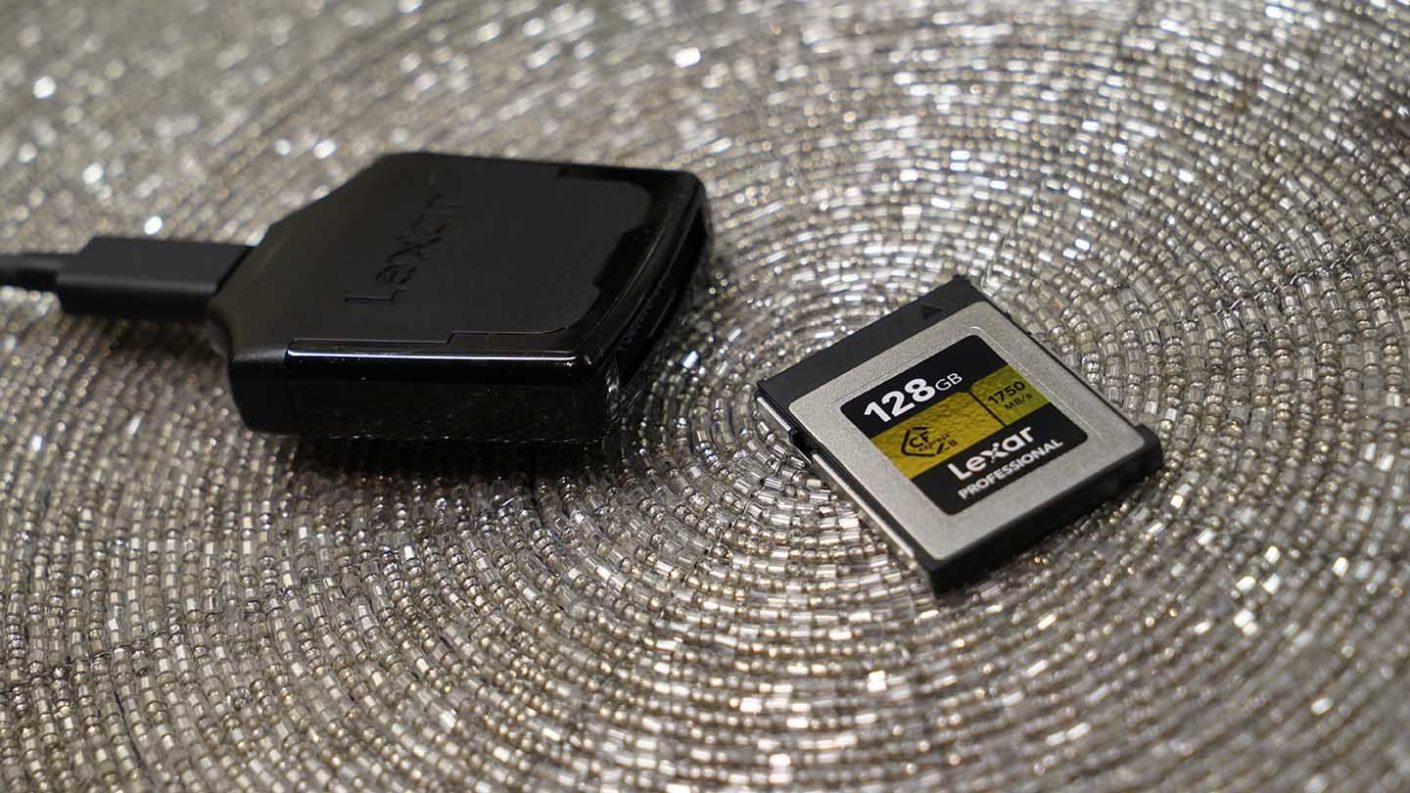
Specification
- Capacity: 64GB – 512GB
- Form factor: CFexpress Type B
- Interface: PCIe Gen3x2
- Transfer speeds: 64GB — 512GB Up to 1750MB/s read, up to 1000MB/s write
- Operating temperature: -10° C to 70° C (14°F to 158°F)
- Storage temperature: -40° C to 85° C (-40°F to 185°F)
- Dimensions: 29.60 x 38.50 x 3.80 mm / 1.16” x 1.51” x 0.14”
- Weight: 7.65 g / 0.016 lbs
The Lexar 128GB CFexpress features next-generation technology that exceeds the transfer speeds required by most mirrorless and DSLR cameras. The Lexar 128GB CFexpress is available in 64, 128, 256, and 512GB capacities and all capacities are Type B.
It may be due to CFExpress being a relatively new format and companies trying to impress, but it does seem that the build quality of these next-generation memory cards is excellent across the board. With the Lexar 128GB CFExpress that quality is instantly apparent from its metal casing and solid build.
The robustness of design probably has something to do with the need to keep things cool, but still, after using SD for so long, these things just feel solid. Build quality is good, but it’s those speeds that make this 128GB CFExpress card a must-have for the latest generation of cameras.
Read our Lexar Professional CFexpress Type B Gold Series Review
£224
$199For
- Fast read/write times
- Future proof technology
SanDisk Extreme Pro CFexpress Card Type B
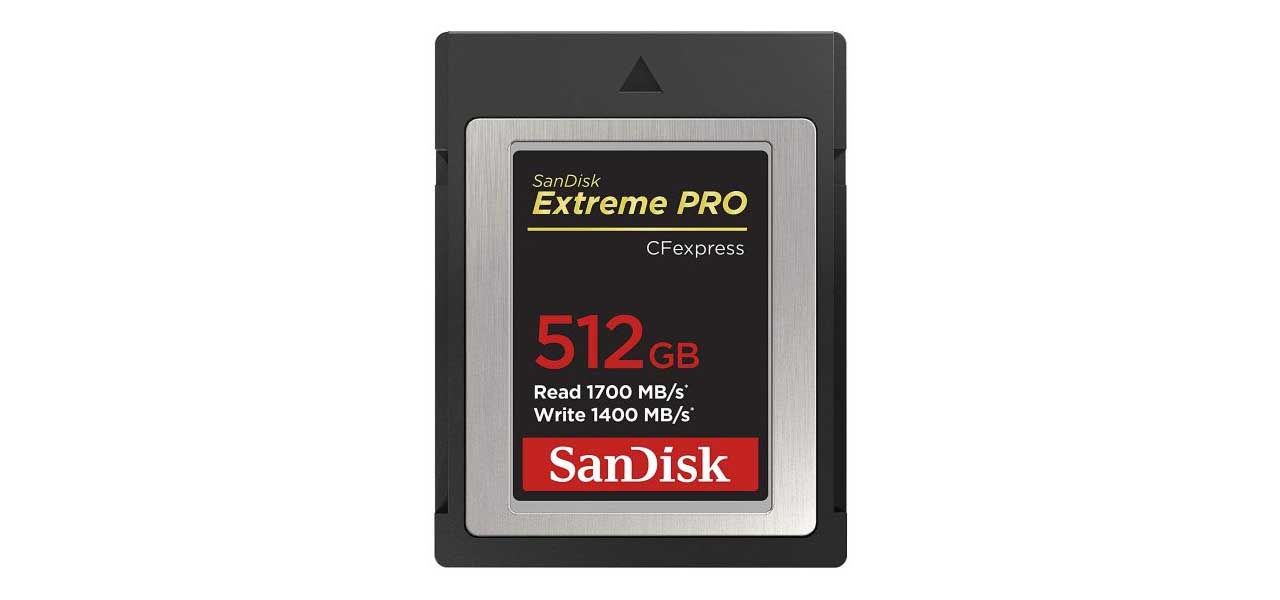
Specification
- Write Speed: 1400MB/s
- Read Speed: 1700MB/s
- XQD Compatibility: Backwards compatible with XQD cameras
Promising write speeds of 1400MB/s and prices starting from £165, the SanDisk Extreme Pro CFexpress Card Type B is one of the best CFexpress cards you can get if your camera uses the more ubiquitous Type B option.
The SanDisk Extreme Pro CFexpress Card Type B is now available in capacities of 64GB (price: £175), 128GB (price £294), 256GB (price £494) and 512GB (£692).
Designed for recording 4K video, the new SanDisk Extreme Pro CFExpress cards promise write speeds of up to 1400MB/s and read speeds of 1700MB/s.
SanDisk’s CFexpress cards are also backwards-compatible with cameras that use XQD cards, provided those cameras are updated with new firmware. Nikon, for instance, updated its Z6 and Z7 cameras to support the CFexpress card format.
Read our SanDisk Extreme Pro CFexpress cards listed on Amazon
£165
$99For
- Great for shooting 4K video
- Rugged, durable design
- Backwards compatible with XQD cameras
Manfrotto Professional 128GB CFexpress Type B
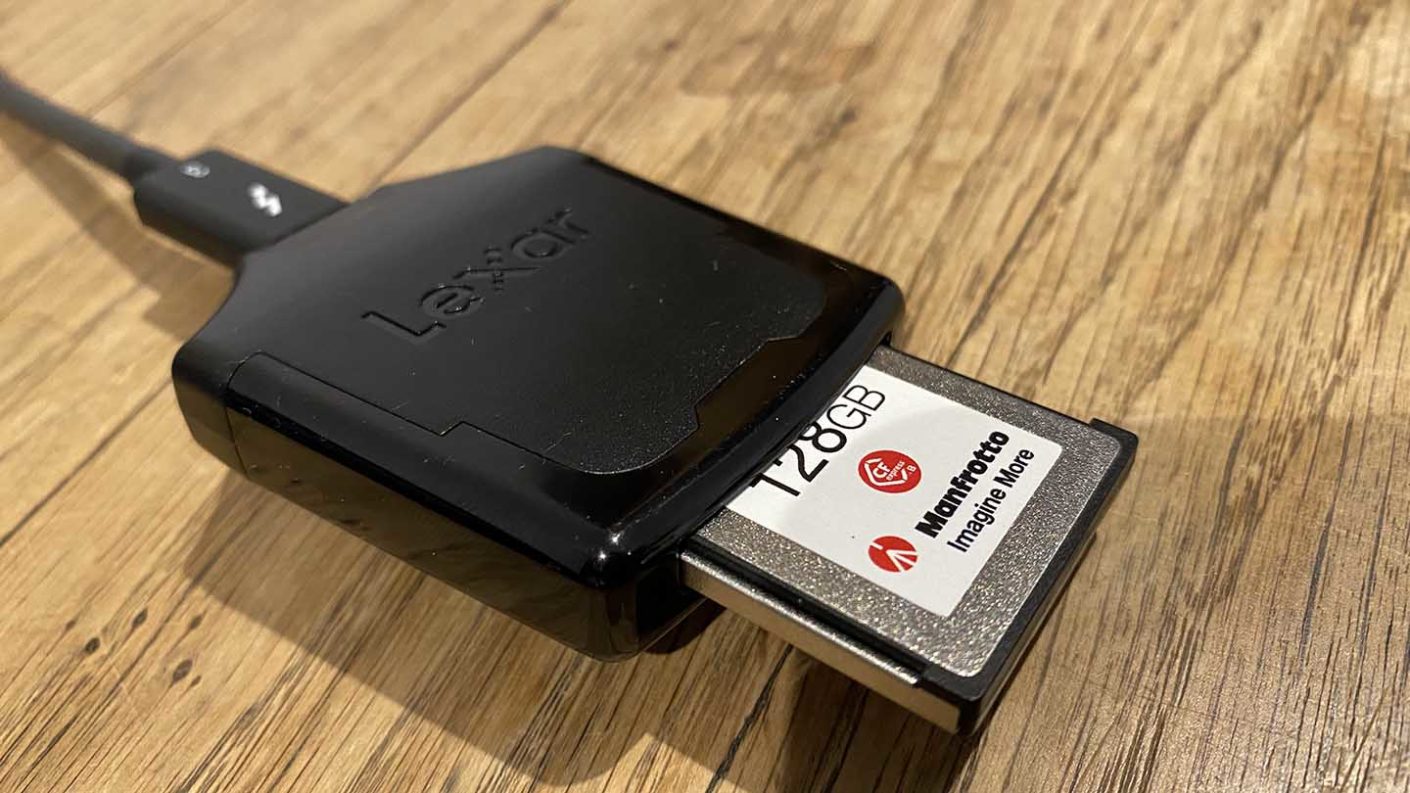
Specification
- Capacity: 128GB, 256GB
- Read Speed: 1730MB/s
- Write Speed: 1540MB/s
- Operating temperature: -20° to 70° C
- Weight: 5g
While better known for its tripods, Manfrotto’s new CFExpress cards, 128GB and 256GB, mark a natural progression for the company.
The new Manfrotto Professional 128GB CFexpress Type B has been designed with the latest cameras in mind and slotting into a Nikon Z6, with a firmware update, the card keeps up with every demand placed on it.
Throughout our tests, the card’s build quality and design were solid enough, and the performance in and out of the camera met the company’s claims.
From 4K resolution video to fast shooting, there was seemingly no delay in the speed of the camera or Manfrotto Professional 128GB CFexpress Type B storage.
£189
$199For
- High Capacity
- Ultra-fast Speed
- Well made
Best XQD memory cards for video
Developed earlier in the 2010s as a successor to CompactFlash cards, XQD cards are designed for professional uses, such as recording video. XQD cards offer the complete package of fast read and write speeds together with high storage capacities.
XQD cards are already starting to be overtaken by the new CFexpress format, but many cameras still use XQD and the cards are still readily available. If you shoot video, or if you photograph sports, news or other fast-moving events, XQD is the memory card format for you.
Sony Professional XQD G Series

Specification
- Write Speeds: 400MB/s
- Read Speeds: 440MB/s
- Operating Temperature: -25 - +65°C
- Dimensions: 29.6 x 38.5 x 3.8mm
XQD memory cards aren’t as widely compatible as other current card formats but one look at the read and write speeds of this card gives you an idea of its potential for video. Write speed is up to 400MB/s and read speed is up to 440MB/s with a maximum capacity version of 256GB.
The speeds lend themselves to recording and working with 4K video footage and should catch the eyes of users of Nikon mirrorless or DSLR cameras, as well as those of you who may have already invested in a LUMIX S1 or S1R full-frame mirrorless model. One other thing to note is that Sony pioneered this card format, so it currently makes the best XQD cards on the market.
You can buy Sony’s XQD G series cards at Amazon UK and Amazon US.
£95
$116For
- Fast write speeds
- Robust build
- Affordably priced
Best SD cards for video
Although some new formats like XQD and CFexpress have come along, the SD memory card format is the most commonly used in cameras. It’s also compatible with the memory card readers that are sometimes built into laptops and computers. SDXC cards can be made in capacities from 32GB to 2TB, making them extremely versatile for recording video.
Kingston Canvas React Plus SDXC
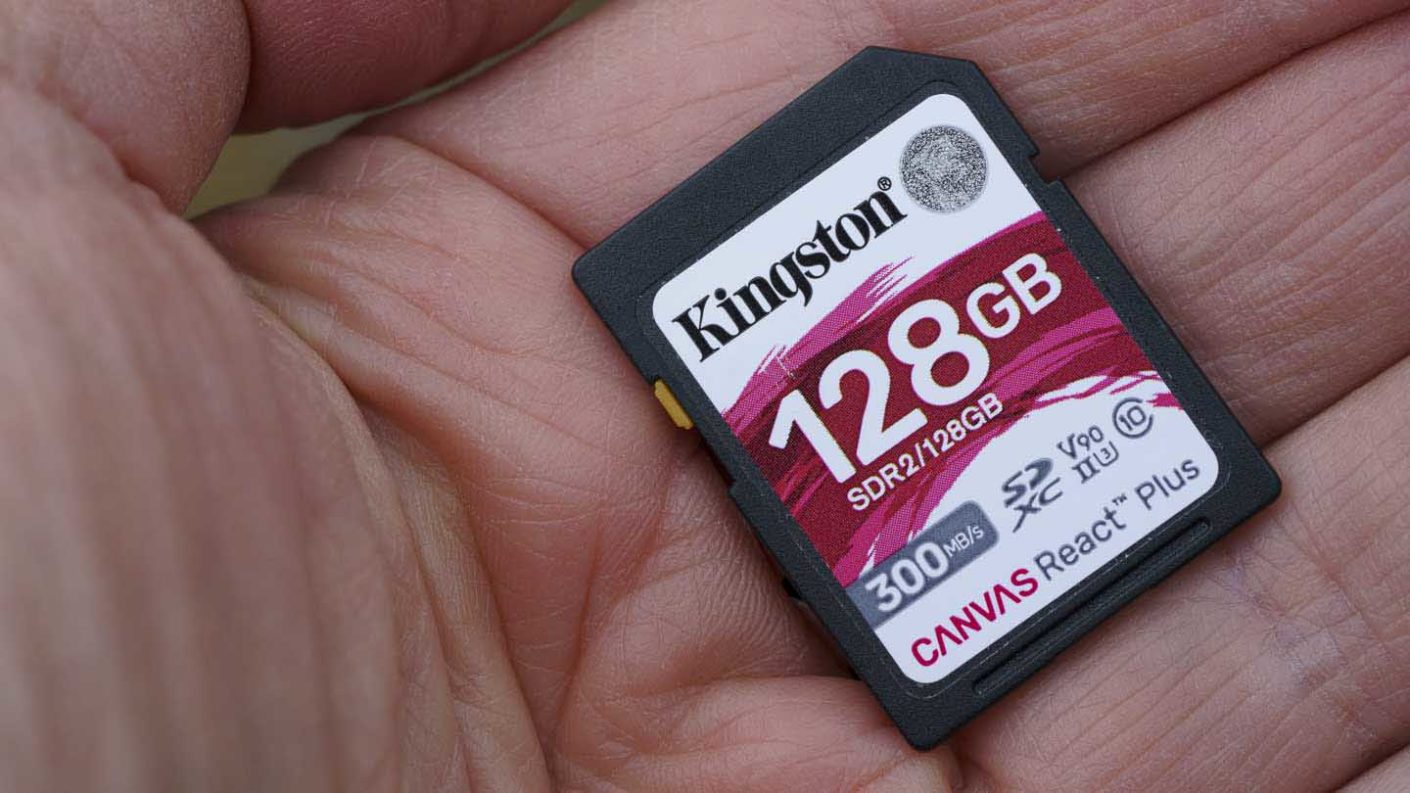
Specification
- Product type: SDXC Memory card
- Speed class: UHS-II, U3, V90
- Maximum read speed: 300MB/s
- Maximum write speed: 260MB/s
- Capacities: 64, 128 and 256GB
Over the last year, we’ve tested all the new mirrorless cameras, including the Canon EOS R5 and R6, the Sony A7S III and the Nikon Z6 II and Z7 II, the Kingston Canvas React Plus SDXC performed perfectly with all of them when shooting stills at high frame rates and video at high resolution.
We haven’t been able to get the claimed maximum transfer speeds when moving files onto a 2019 iMac, but the card is no slouch either and we haven’t been kept waiting for long. The card is available in a range of capacities but the 64GB and 128GB cards offer the most attractive balance between capacity and price. Our reviews editor Angela has a few 64GB cards and she appreciated the extra capacity of the 128GB card, especially when shooting 4K video.
£44
$59.99 / £78.88 / $108.99 / £187.47 / $237.99For
- Suitable for 4K and 8K video recording
- Common format
- Supplied with the Kingston MobileLite Plus SD Reader
Lexar Professional 2000x SDHC/SDXC UHS-II Cards
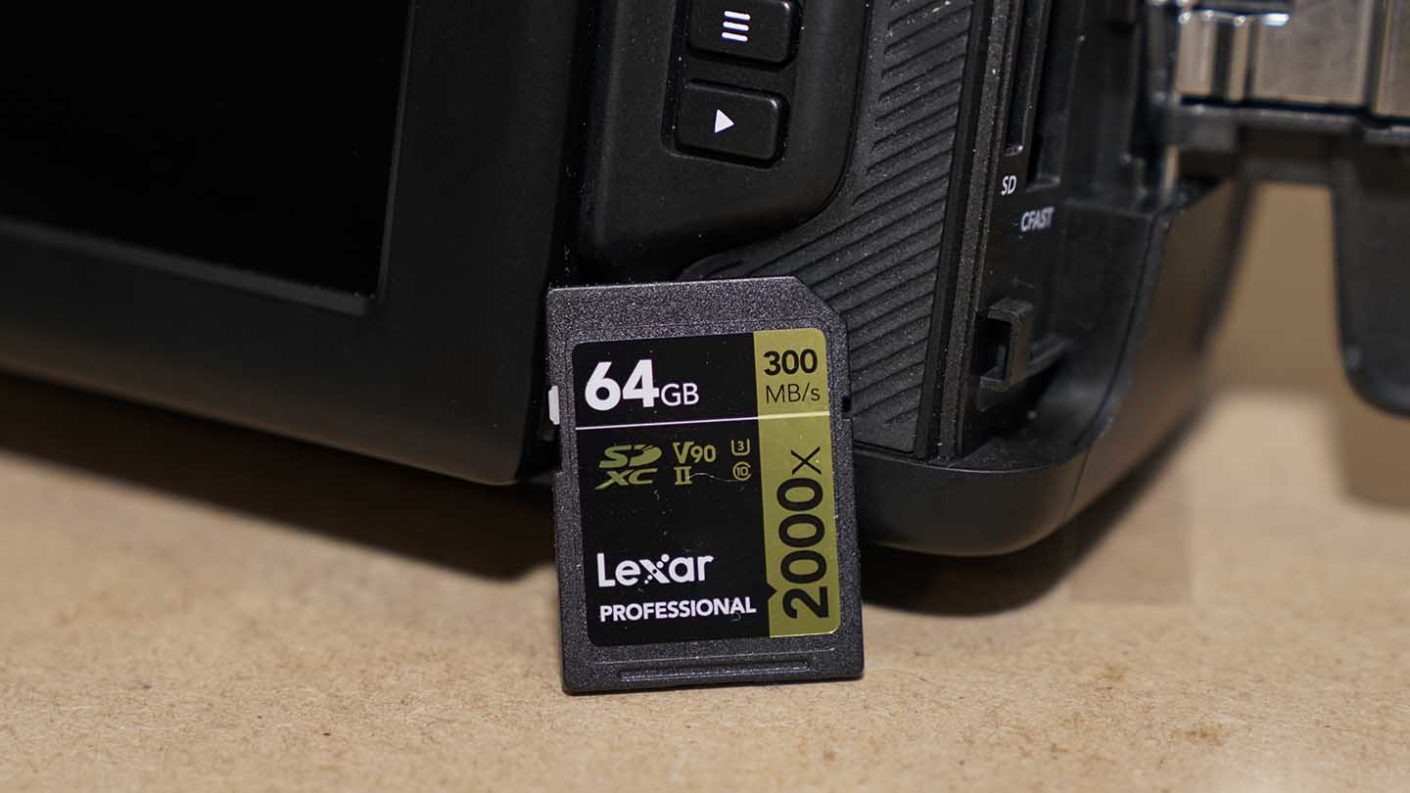
Specification
- Max Read Speed: 300MB/s
- Max Write Speed: 260MB/s
- Standard Classes: Class 10, UHS-II, U3, V90
- Operating temperature: 0°C - 70ºC
- Storage temperature: -25ºC - 85ºC
The Lexar® Professional 2000x SDHC/SDXC UHS-II Cards card shows there’s plenty of life left in the UHS-II SD format. The card features transfer speeds that are more than capable of keeping up with the latest image and video capture demands. The card also offers a relatively affordable choice per GB compared with the newer CFExpress and CFast options.
In use, the card performs well with no warnings from either the Sony A7 III or Blackmagic Designs Pocket Cinema 6K Pro. Back in the studio, download times were equally impressive.
If you need a top performance SD card for your 40mp+ stills or 4K+ video capture, then the Lexar® Professional 2000x SDHC/SDXC UHS-II Card won’t let you down.
£79
$86For
- Fast read/write times
- High Capacity
- Robust
Manfrotto Pro Rugged UHS-II SD Card Review
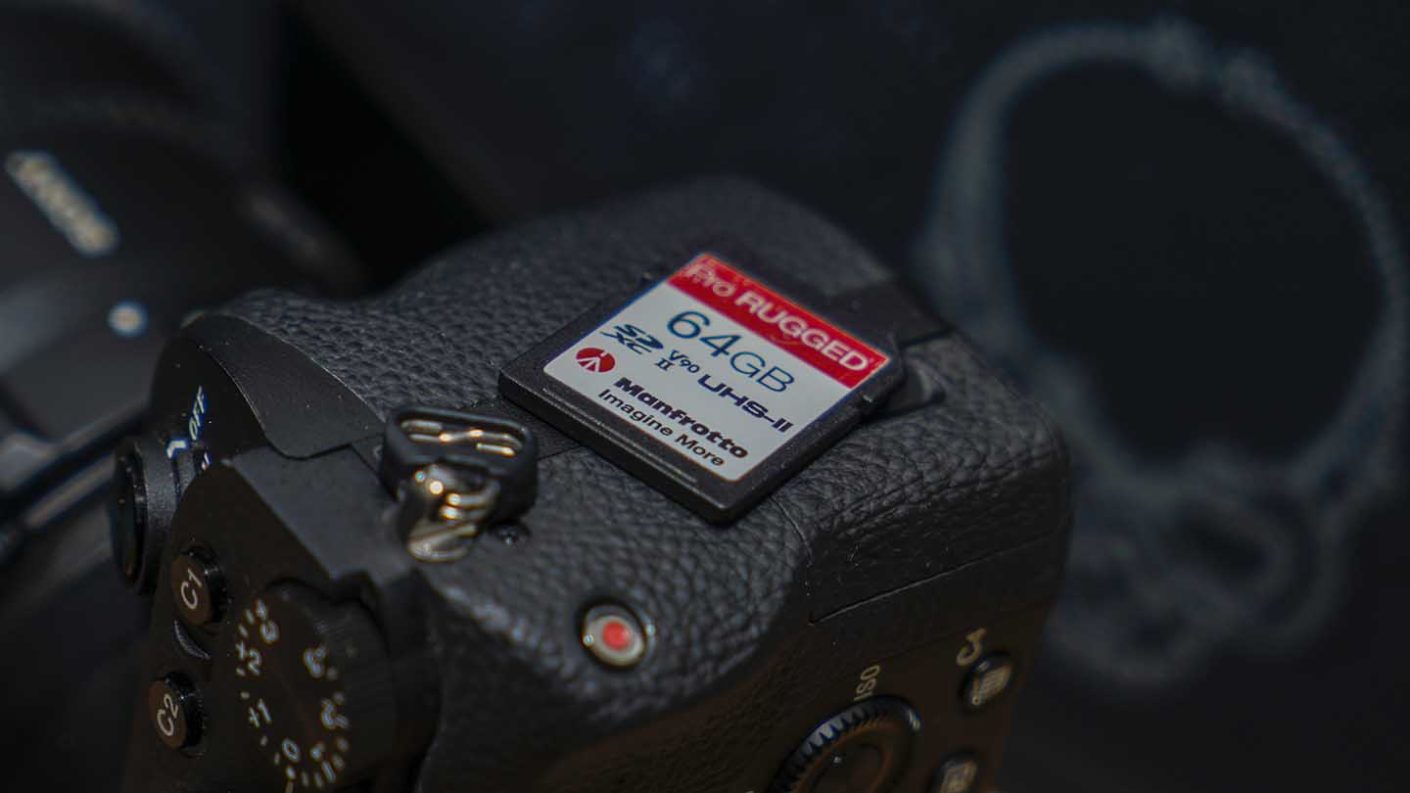
Specification
- Video Speed Class Rating: V90
- Read Speed: 280MB/s
- Write Speed: 250MB/s
- Ultra High Speed: II
- Waterproofing: Up to 72 Hours
- Minimum Working Temperature: -25º
- Maximum Working Temperature: 85º
- Weight: 0.02 kg
The latest UHS-II cards offer speeds of up to 312MB/s, which, yes, may be less than half the speed of CFExpress cards, but it’s still more than enough for the majority of today’s cameras.
Cameras such as the Canon EOS R5 offer both SD and CFExpress cards slots; this is surely recognition that many photographers will already have stacks of SD cards, and the additional cost of CFExpress could deter adopters of the new R series camera if that was the only format on offer.
UHS-II cards will suffice in capacity and speed for most people’s needs, and the format is also far cheaper. Manfrotto’s latest Pro Rugged 64GB SDXC V90II UHS-II proves very effective, keeping up with the demands of the Sony Alpha 7R II and 7 III in our tests when shooting stills and 4K Video.
For both the read and write results, the small card performed exceptionally well. No issues with the transfer speeds and the at 253MB/s read and 219MB/s write that puts it at the top of the board when it comes to SD UHS-II speed.
From being a standard ultra-fast SD card solution for video and stills, there is little to fault especially when you look at the price of the Manfrotto card against that of the SanDisk Extreme Pro.
£99
$99For
- Fast read/write times
- Tough reinforced design
- Waterproof

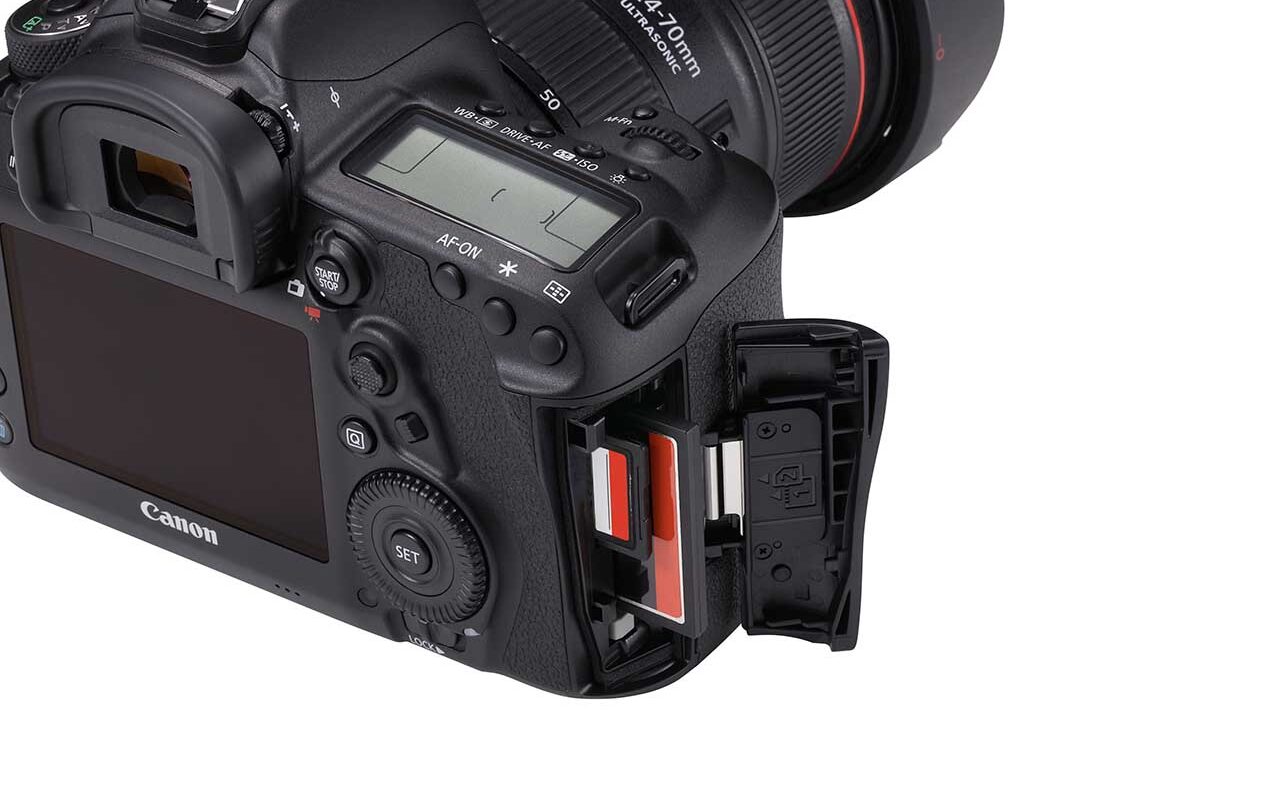


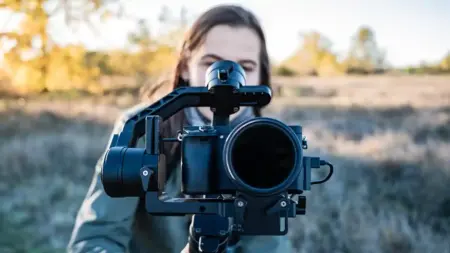
Leave a Reply